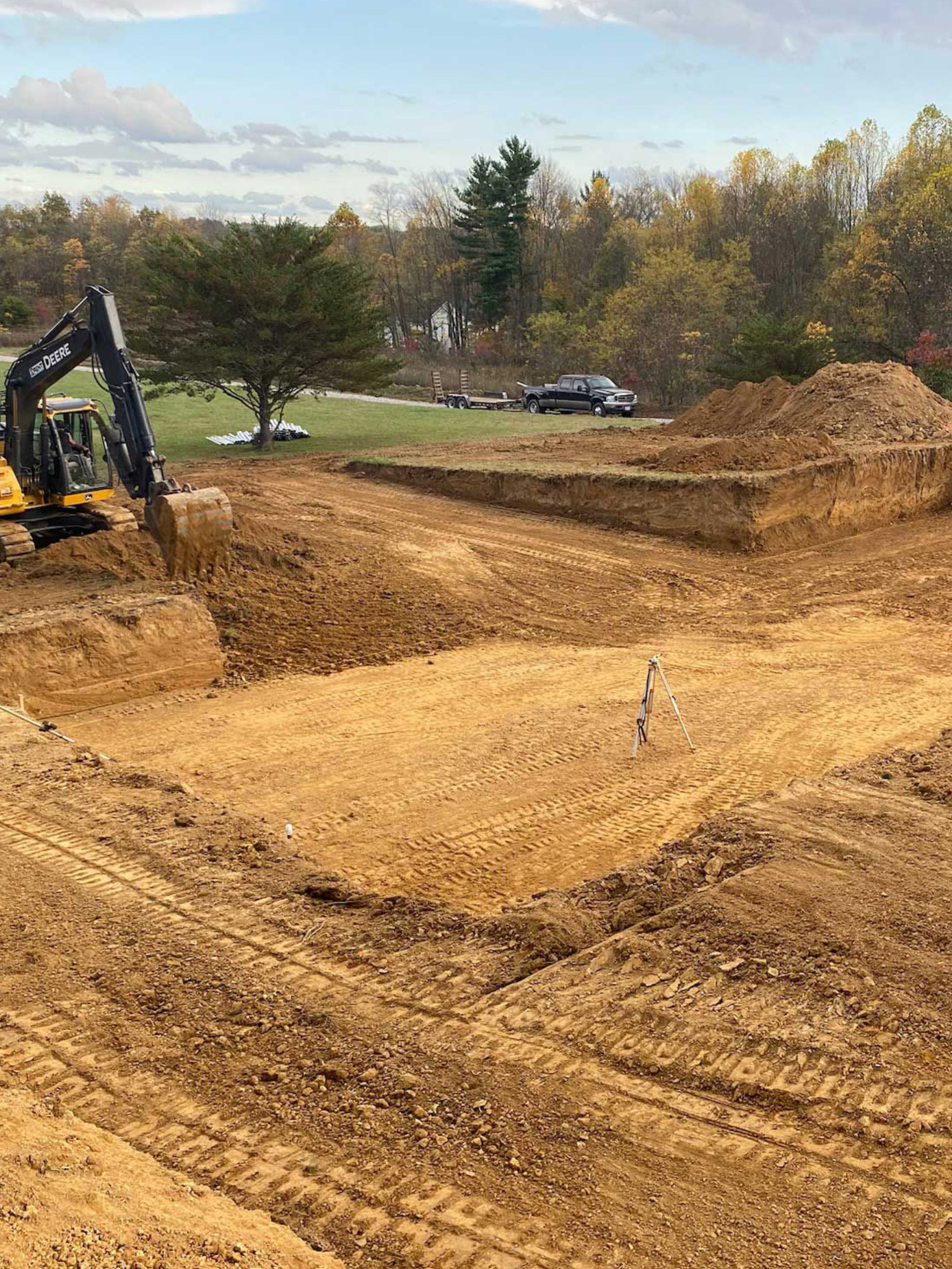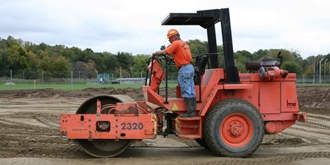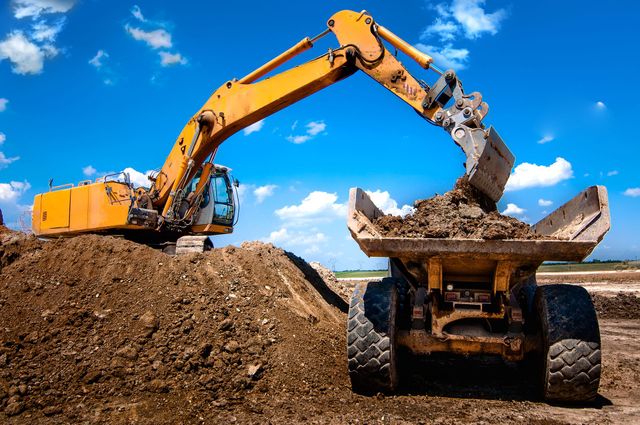Residential Excavating Ohio - Specialized Excavation for Ohio Houses
Residential Excavating Ohio - Specialized Excavation for Ohio Houses
Blog Article
Extensive Expedition: The Scientific Research Behind Superior Excavation Practices
The realm of excavation techniques is a domain name where science intertwines with workmanship to uncover the mysteries concealed beneath the planet's surface area. From ancient hand tools to modern-day hydraulic excavators, the evolution of excavation methods has been a testimony to human resourcefulness and technological developments. Nevertheless, what genuinely establishes premium excavation techniques apart is a deep understanding of geological principles, coupled with the utilization of advanced tools and methods. By checking out the scientific research behind these methods, we can discover the tricks that lie beneath our feet and value the precision and know-how that enter into every dig.
Evolution of Excavation Strategies
Throughout background, the evolution of excavation techniques has actually played a critical function beforehand building and construction methods and archaeological discoveries. From the rudimentary tools used by our forefathers to the advanced machinery used in contemporary times, the progression of excavation approaches has significantly changed how we come close to different tasks.
In ancient times, manual work with fundamental devices such as pickaxes, wheelbarrows, and shovels was the primary technique of excavation. This labor-intensive procedure limited the deepness and range of excavations, often leading to slow-moving development and limited access to specific websites. Nevertheless, as civilizations advanced, so did the tools and strategies utilized for excavation.
The Industrial Transformation noted a turning factor in excavation exercise with the introduction of steam-powered equipment. This innovation transformed the area, permitting faster and a lot more comprehensive excavations. In modern times, modern technology plays a critical function in excavation, with advancements like general practitioner systems, drones, and 3D scanning improving precision and performance in the area. The advancement of excavation techniques continues to shape the means we build, explore, and comprehend the world around us.
Duty of Modern Technology in Excavation

The assimilation of cutting-edge modern technology has basically reinvented the area of excavation, improving accuracy and effectiveness to unmatched degrees - dump truck companies in ohio. One of the vital technological innovations that has dramatically impacted excavation methods is the usage of General practitioner systems.
Furthermore, the development of 3D modeling and simulation software program has streamlined the planning procedure for excavation jobs. Operators and designers can currently visualize the entire excavation procedure prior to breaking ground, maximizing and identifying prospective difficulties operations. Combined with this, the application of drones in excavation tasks has actually facilitated aerial surveys, volumetric measurements, and website examinations with unequaled rate and accuracy.
Geological Principles in Excavation
An understanding of geological principles is crucial for ensuring the structural stability and stability of excavation sites. Geological aspects play a critical role in determining the feasibility and security of excavation jobs (dump truck companies in ohio). One vital geological concept to take into consideration is the kind of dirt or rock existing at the website. Various soil types, such as sand, crushed rock, or clay, have differing degrees of security and call for various excavation strategies. For instance, cohesive soils like clay might need added support to stop collapses, while sandy soils may be prone to erosion throughout excavation.
In addition, the geological structure of the area, consisting of faults, fractures, and rock formations, need to be thoroughly assessed to recognize prospective risks and difficulties. Excavating near mistake lines or unpredictable rock formations can lead to instability and prospective hazards. By performing detailed geological studies and analysis, excavators and designers can create techniques to mitigate dangers and ensure the effective completion of excavation jobs. Ultimately, including geological principles right into excavation practices is critical for accomplishing secure, effective, and lasting results.

Newest Tools for Excavation
In the realm of excavation practices, contemporary technologies in tools have actually transformed the efficiency and precision of excavation processes. These drones can give thorough aerial surveys of excavation websites, using real-time data on topography and potential hazards.
An additional cutting-edge device getting popularity is the execution of try this website 3D printing innovation for creating personalized excavation devices. This enables the manufacturing of specialized devices that are tailored to the details needs of a project, raising efficiency and lowering downtime.
In addition, improvements in materials scientific research have brought about the development of more powerful and much more sturdy excavation devices. dump truck companies in ohio. Tungsten carbide-tipped excavator attachments, as an example, offer premium performance in difficult ground problems, improving performance on-site
Scientific research's Impact on Excavation Practices

Furthermore, clinical research on soil auto mechanics and geotechnical design has supplied beneficial insights into dirt actions, allowing excavation experts to make enlightened choices regarding excavation techniques and dirt stabilization techniques. In general, scientific research proceeds to drive innovation and enhancement in excavation techniques, making excavation projects more effective, cost-effective, and sustainable.

Conclusion
Finally, the advancement of excavation strategies has actually been substantially affected by innovations in modern technology and a deeper understanding of geological principles. The latest devices and tools utilized in excavation have enhanced effectiveness and precision in the field. The application of scientific knowledge has actually significantly check over here boosted excavation methods, bring about a lot more lasting and efficient methods for digging deep into various sorts of materials.
In the world of excavation techniques, modern advancements in tools have transformed the efficiency and accuracy of excavation procedures. By leveraging clinical principles, the excavation market has been able to substantially boost performance, accuracy, and safety in excavation processes. GPR permits excavation teams to non-invasively check and map subsurface frameworks, utilities, and potential hazards, allowing them to prepare excavation jobs with greater accuracy and minimized threat of why not check here mishaps.
Additionally, clinical research study on soil mechanics and geotechnical design has provided beneficial understandings into dirt habits, allowing excavation specialists to make educated decisions regarding excavation approaches and soil stablizing methods. Generally, science proceeds to drive advancement and improvement in excavation techniques, making excavation jobs more effective, economical, and lasting.
Report this page